Alaska is home to nearly five hundred bird species roaming its beautiful forests and mountain ranges. There are twenty types of finches in The Last Frontier and the most important skill you need to spot them is an adventurous spirit.
Finches characteristically have round bodies and rounded bills for cracking open seeds. However, different finches have subtle changes in coloration, call, and behavior that make them a treat to find!
We want to make it easier for you to glimpse some of Alaska’s most beautiful birds. Below is a list of twenty Alaskan finches and all the information you need for your next trip.
Asian Rosy-Finch

Asian rosy-finches (Leucosticte arctoa) live up to their name with a dark brown body and pinkish spots on the stomach…at least, the males do! Females have no pink and are light gray-brown.
These adorable birds are trickier to find thanks to favoring rocky cliffsides and tall mountains. You may be able to entice them with seeds, though they also eat plants and insects.
Gray-Crowned Rosy-Finch

The gray-crowned rosy-finch (Leucosticte tephrocotis) is known for having a bill that changes color – yellow in winter and black during the breeding season. Males are brown with a gray head and subtle pink flecks on the stomach, while females are uniformly brown with a dusting of pink.
These birds usually appear in Alaska during breeding season, but occasionally stay year-round.
Red Crossbill

The red crossbill (Loxia curvirostra) is easy to identify thanks to its peculiar twisted beak. Males have blushy coloration and black markings around their eyes, while females have soft yellows and browns.
You can find them throughout Alaska year-round in coniferous forests dining on conifer seeds.
White-Winged Crossbill
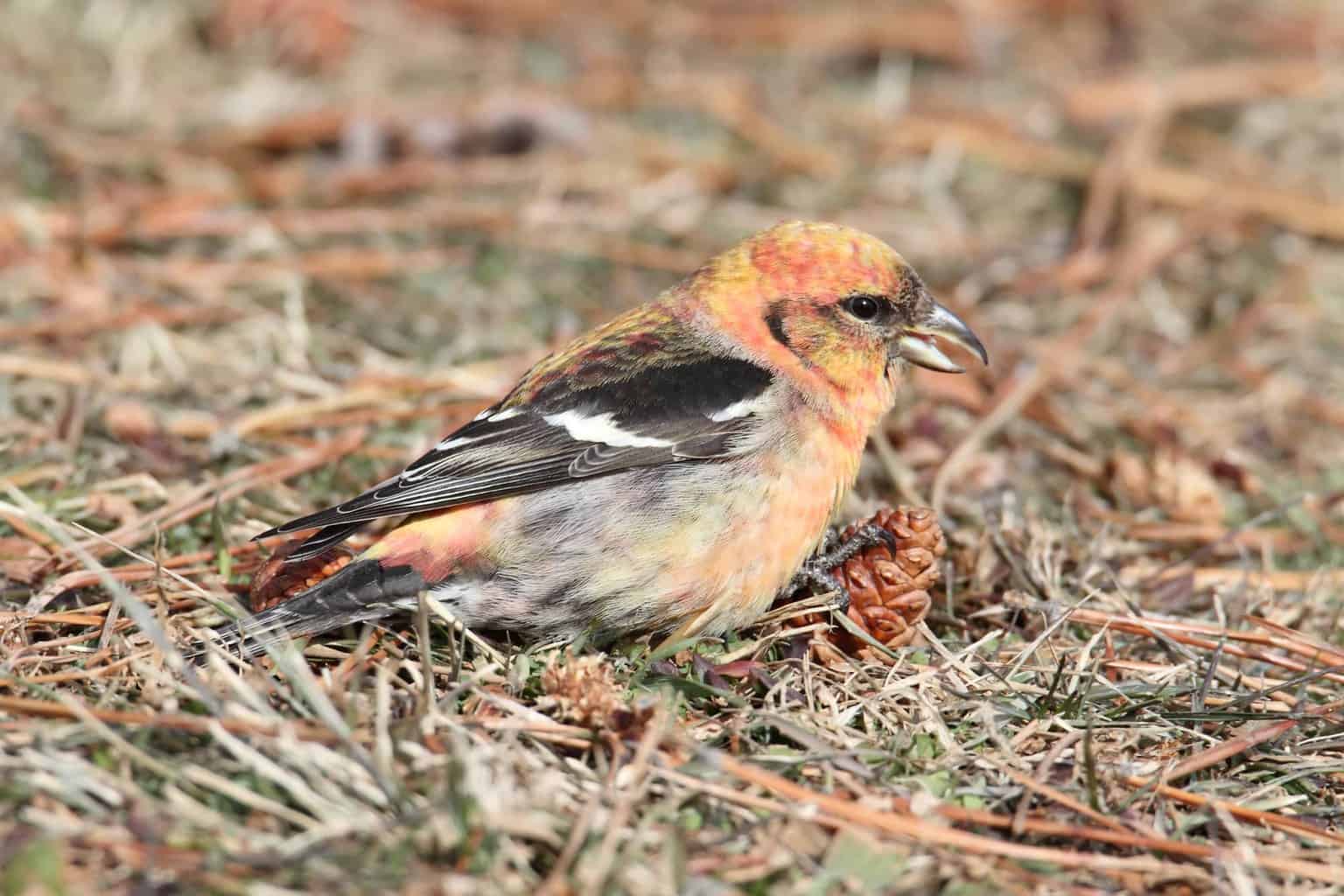
Also known as the two-barred crossbill, the white-winged crossbill (Loxia leucoptera) appears in Alaska year-round and prefers to hang around spruce-fir forests. Males are known for their bright red head and mottled black and white wings, while females are a subdued yellow.
Catch a glimpse (or two) by attracting them with conifer seeds.
Pine Grosbeak
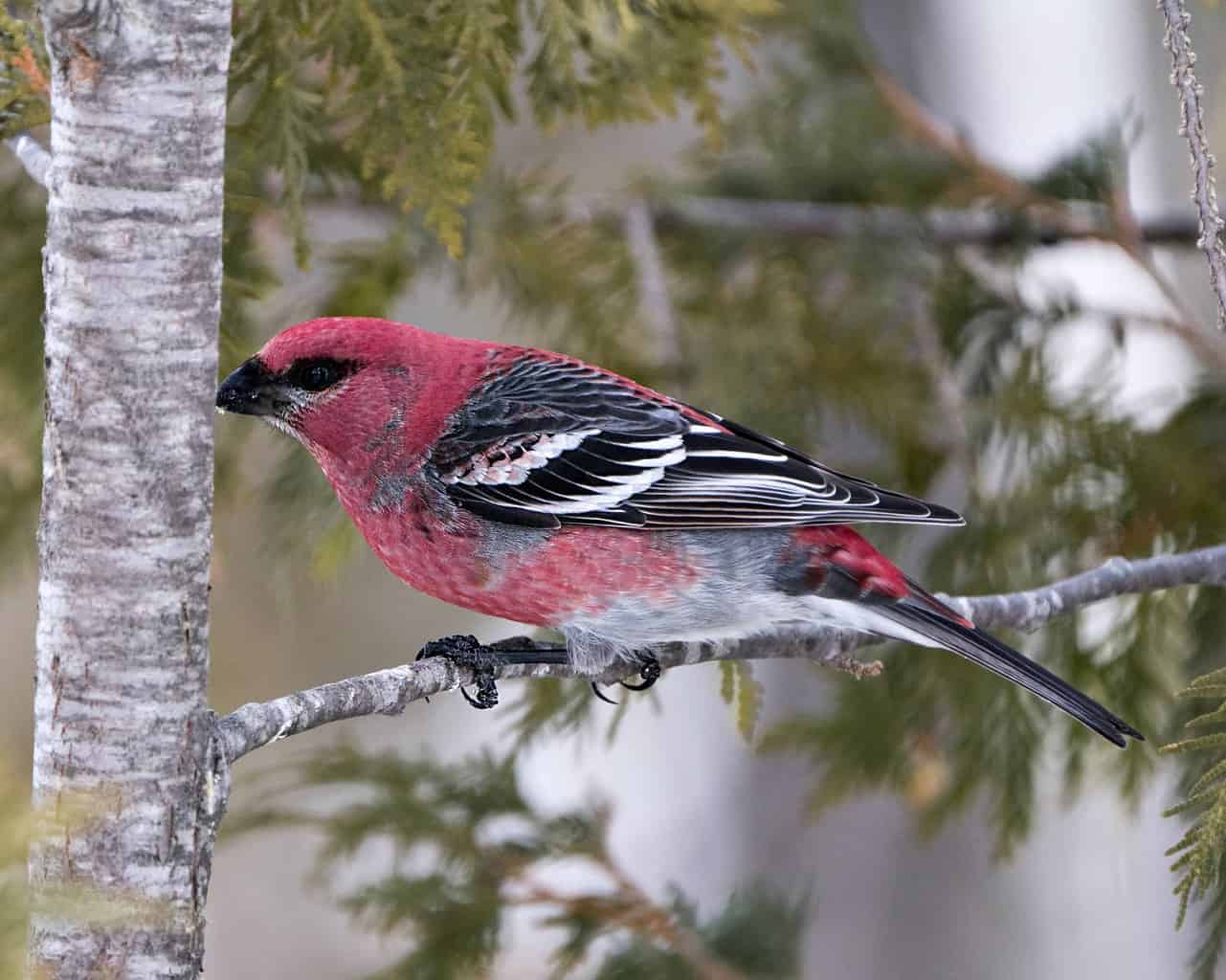
While pine grosbeaks (Pinicola enucleator) often breed in Northern Alaska, they eventually move south. Males have flushed red heads and backs with black wings, while females have light gray bodies with light yellow heads.
While you’ll see them in pine and spruce forests, you can try enticing them with suet feeders.
Pine Siskin
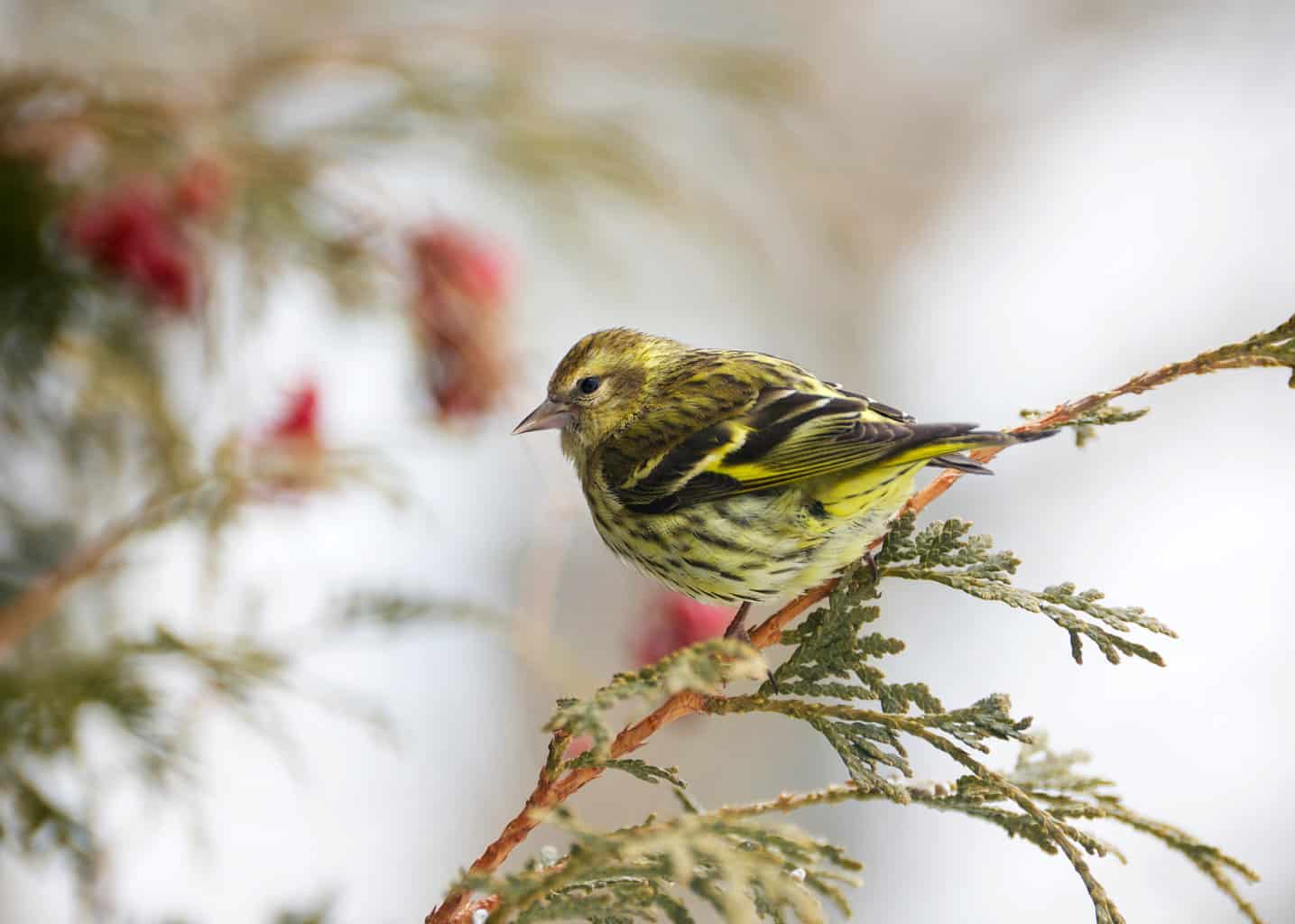
The pine siskin (spinus pinus) earned their name from their love of conifers. Males almost appear sparrow-like with their mottled yellow and white patches, while females have similar coloration and patterns to the males (which is unusual among finches).
These birds appear year-round in Alaska, so try attracting them with black oil sunflower seeds. Their birdcall is composed of cheeps and long, exaggerated trills.
Hawfinch

Hawfinch males (Coccothraustes coccothraustes) are a medley of orange and blue with black markings around the eye and throat. Females have lighter and softer versions of the males’.
Expect to see these birds mostly in the southern portion of the state (though they have a very shy nature).
Brambling

Bramblings (Fringilla montifringilla) are also less common in Alaska and are only occasionally spotted in the southern region in winter. The males have vivid orange and mottled gray-white coloration, while females are easy to confuse with juveniles thanks to their soft gray colors.
They seek out seeds in the winter and snack on insects during summertime. While less common, their flocks can sometimes reach several thousand strong.
Hoary Redpoll

Hoary redpolls (Acanthis hornemanni) migrate throughout Alaska, showing up in the north during the breeding season. Males have white bodies with red patches on their heads and blushing stomachs, while females have streaked stomachs.
They’re fond of open areas and have a birdcall composed of rapid-fire chirps, often four chirps at a time.
Common Redpoll

When you want an easier finch for birdwatching expeditions, the Common Redpoll (Acanthis flammea) frequently pops up in Northern and Southern Alaska. Males have red spots on their heads and chests, while females are lighter with the same red head spot.
Shelled sunflower seeds are a big favorite, so you can easily attract these cuties to your yard.
Common Rosefinch
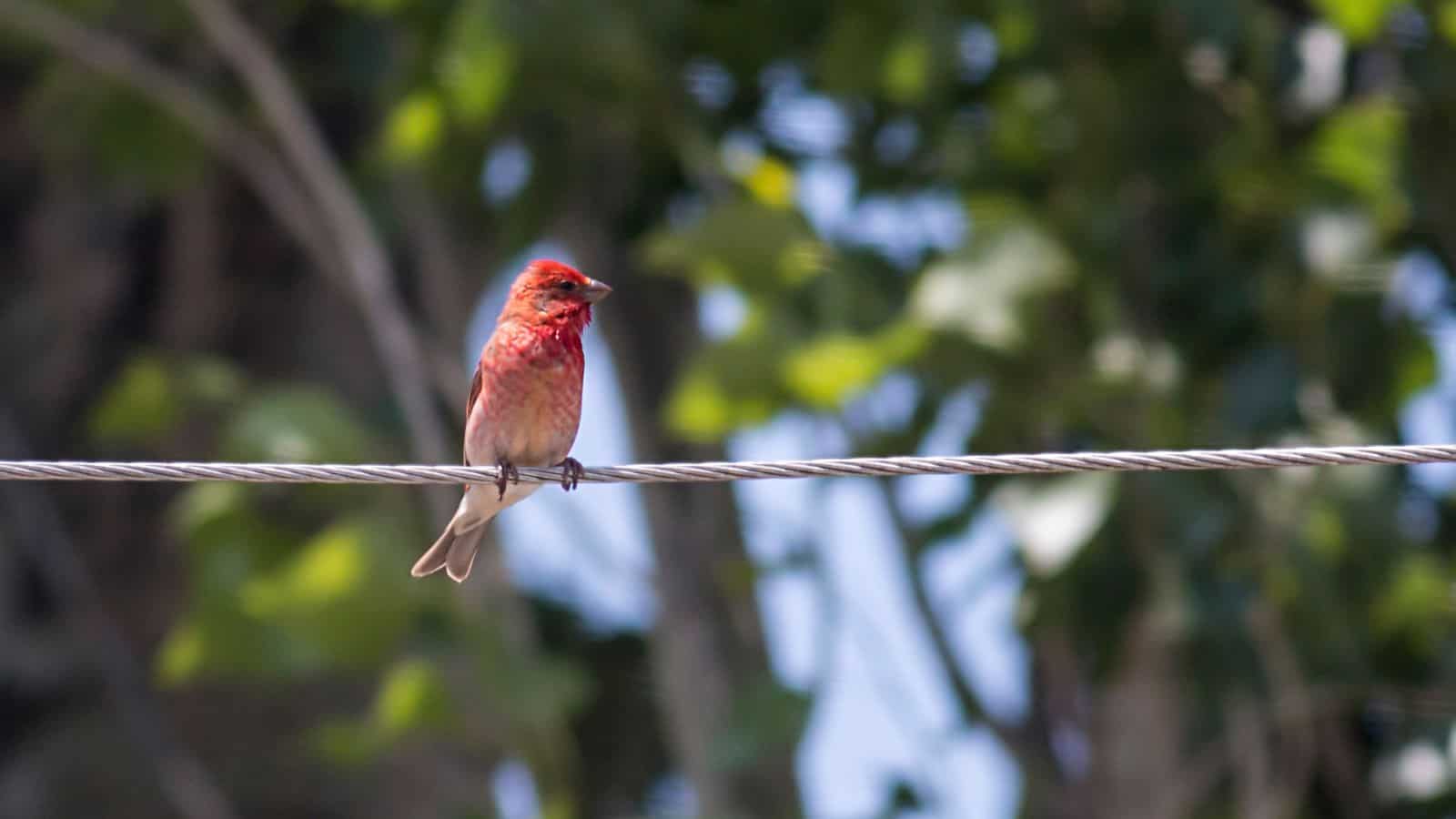
The common rosefinch (Carpodacus erythrinus) is a tricky finch to find due to favoring Alaska’s surrounding islands. Males have red heads and chests, while females are light gray and white.
Expect to see them in the summer foraging for food (and expect to easily spot their swooping and repetitive four-note birdsong).
Oriental Greenfinch

The oriental greenfinch (Chloris Sinica) usually appears in Asia, but sometimes visits Alaska in winter and summer. Males are light greens with yellow or brown stomachs, while females are uniformly light brown.
They’ll pop up in gardens and parks as readily as forests.
House Finch
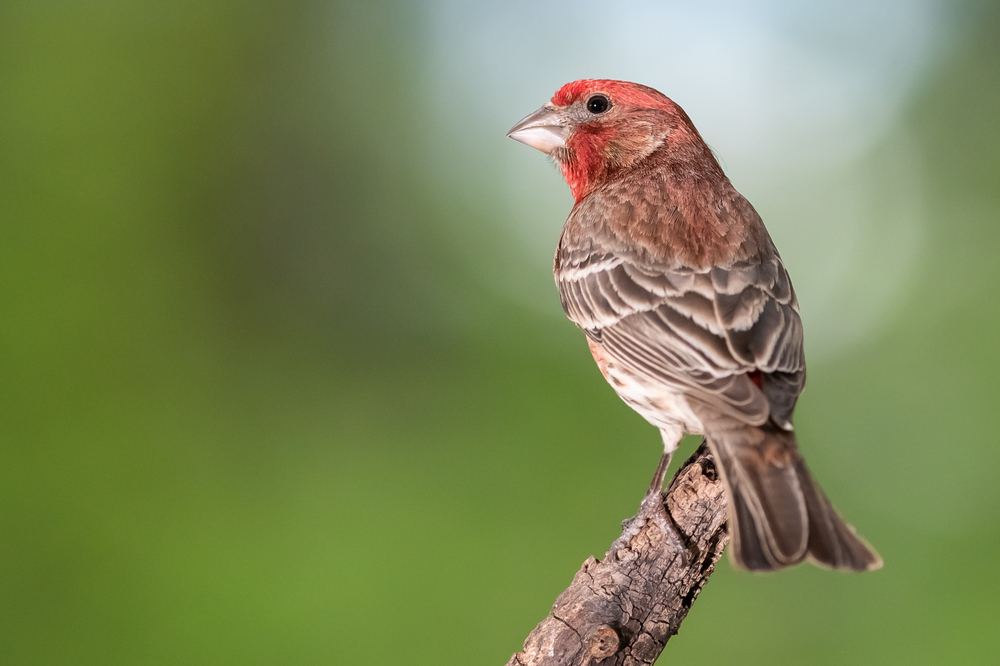
The house finch (Haemorhous mexicanus) is one of the most widely distributed finches in the country! They crop up all throughout the United States after being released by illegal pet shop owners in the 40’s.
You’ll occasionally glimpse the red-headed males and brown females in Alaskan cities. They love sunflower seeds and will sometimes visit hummingbird feeders.
Purple Finch

Another less common sight in Alaska is the purple finch (Haemorhous purpureus), a member that’s very similar to the house finch in appearance. The major difference is that males have more purple-red coloring.
This little beauty is the state bird of New Hampshire and also pops up in Florida. Purple finches adore black sunflower seeds and sometimes frequent berry bushes.
Cassin’s Finch
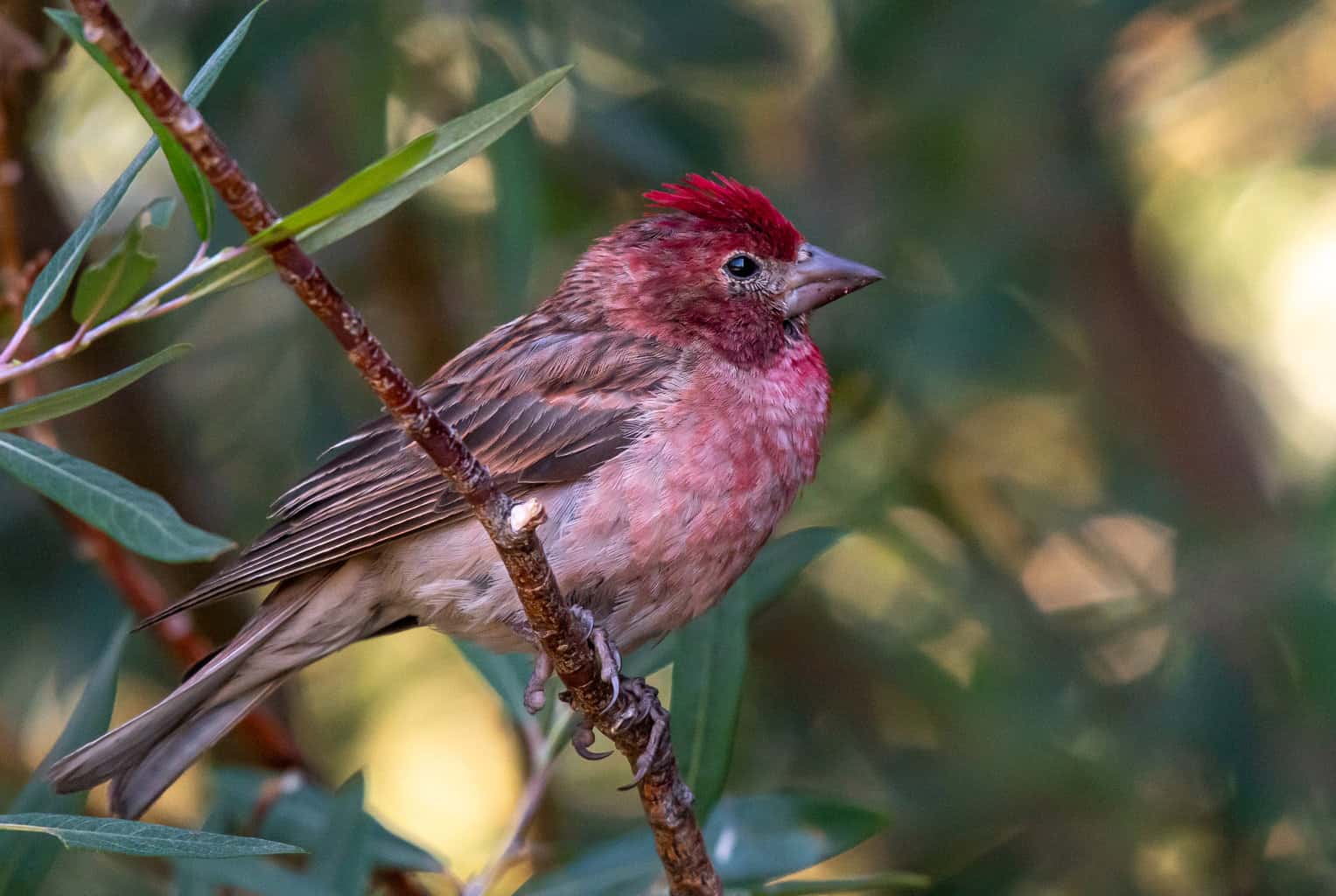
The Cassin’s Finch (Haemorhous cassinii) has a romantic coloration with pink heads, red breasts, and streaks of white. Female birds are a classic subdued brown and gray.
Their varied diets mean you can attract them with sunflower seeds as well as berries or moths.
Evening Grosbeak

With bold yellow and black patterns, the male evening grosbeak (Hesperiphona vespertina) is easy to spot. Even female birds are a little splashy with green bills, gray bodies, and yellow necks.
These birds are easiest to attract in winter with bird feeders, so stock up on berries and seeds. Their birdcall is lilting and trilling with the occasional chirp.
American Goldfinch

Male American goldfinches look similar to domestic canaries with their yellow bodies, their black and white wings set them apart. Females are a gentle brown with a yellow dusting on the stomach.
They have a swooping and diving flight pattern that stands out instantly. Try attracting them with sunflower seeds, elm seeds, or thistles.
Eurasian Bullfinch

It’s impossible to overlook the male Eurasian bullfinch (Pyrrhula pyrrhula) and their red, blue, and black coloration. Females are also elegant in their taupe, black, and gray colors.
You’ll frequently find these birds hanging out in fruit orchards, though they also eat seeds and buds. Their birdsong is quite soft and subtle, so try to spot them visually!
Eurasian Siskin

Male Eurasian siskins boast yellow coloration with a black cap and spackled white and black markings. Expect females to be a little more streaked and mottled.
They’re an accidental species in Alaska, so they won’t appear as often as other finches. Keep an eye out for them in deciduous forests with lots of seeds.
Pallas’s Rosefinch

If you’ve ever wanted to glimpse a finch as red as a rose, the male Pallas’s Rosefinch (Carpodacus roseus) occasionally appears in the Alaskan shrublands. Females are grayer with a few stomach streaks.
Their birdcall is usually a delicate series of chirps in two or three successions. Expect to find them rooting for insects in the summer, then berries and seeds for all other seasons.
Spotting Alaskan Finches Requires an Adventurous Spirit
Finches remain one of the most delightful birds for their unique birdsong and diverse coloration. While many of them are accidental visitors in Alaska, their surprising behavior is a big part of what makes them fun to spot.
Be flexible in how you approach finches, whether it’s outfitting your backyard with a seed feeder or taking a trip out to the Alaskan shrublands. These are the kinds of birds that actively reward a sense of adventure!
If you live in Alaska or want to visit, we’ll help you have the most enjoyable bird-watching sessions possible. Check out our list of sparrows in Alaska or read our thorough guide on spotting wrens.

